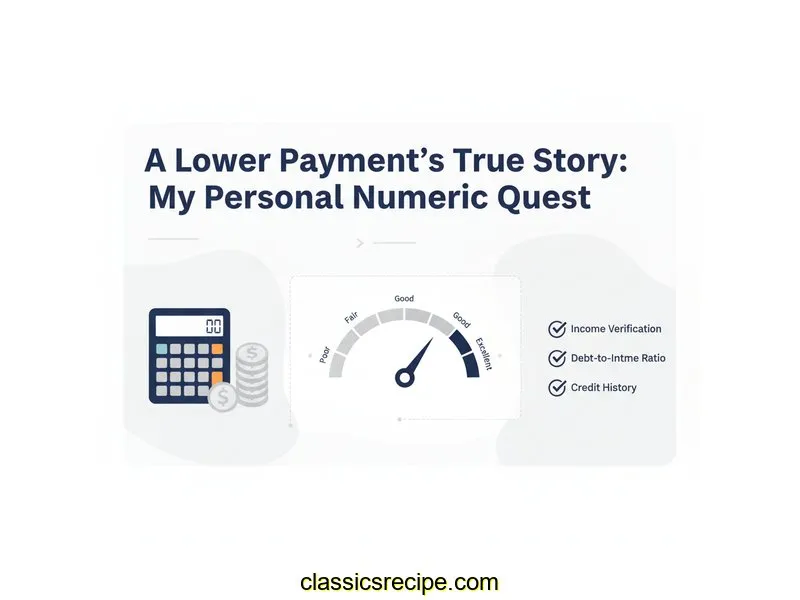
Auto Loan Calculator
Calculate payments over the life of your Loan
Home Blog Privacy Terms About Contact
Calculate payments over the life of your Loan
Home Blog Privacy Terms About ContactPublished on October 15, 2025

It all started with a simple conversation. My friend and I were both looking at hypothetical car loans online, just exploring possibilities. He showed me a scenario he had run through a loan calculator with a monthly payment that seemed incredibly low. It was for a loan amount very similar to one I was modeling, yet his payment was nearly $130 less than mine. For a moment, I felt like I was missing some secret. How was that possible?
He mentioned his loan was for a longer period—72 months instead of the 48 I was looking at. My immediate thought was, "Well, a lower payment is always better, right?" But something about it didn't sit right with me. It felt too easy. How could stretching out the same amount of money result in a better outcome? What was the catch? This wasn't about making a financial decision; it was about the math itself. The numbers were telling a story, and I realized I only understood one sentence of it.
That simple question sparked a weekend-long journey into the world of online loan calculators. My goal wasn't to find the "best" loan, but to understand the mechanics behind the numbers. I wanted to grasp the relationship between the loan's duration, the monthly payment, and the total amount of interest paid over time. I felt a genuine need to connect these dots for myself. Why did changing one number, the term, have such a profound impact on all the others? This is my documentation of that learning process, a look into how I taught myself to see the entire numeric picture. This is about understanding how calculations work, not financial advice.
My initial approach was, I now realize, incredibly narrow. I was solely focused on the "Monthly Payment" field of the calculator. To me, that was the only number that mattered because it represented immediate affordability. I started by plugging in a hypothetical loan amount of $18,350. My first instinct was to see how low I could get the monthly payment.
So, I set the interest rate to a sample 7.2% and slid the term all the way out to 72 months (6 years). The calculator spit out a number around $313.23. My first reaction was positive. "That seems manageable," I thought. It fit neatly into a hypothetical budget, and I felt a sense of accomplishment. I took a screenshot and considered my work done. I had found the "affordable" option.
But the other numbers on the screen kept nagging at me. The tool showed a "Total Interest Paid" and a "Total of Payments" field, but I barely glanced at them. They seemed like secondary information, abstract figures that didn't impact my wallet today. My entire analysis was based on one single data point, and I was ignoring the context that gave it meaning. I was so fixated on the monthly cash flow that I completely overlooked the long-term narrative the numbers were trying to tell me.
The frustration began when I tried to compare this scenario to the shorter-term one I had initially modeled. The 48-month term gave a monthly payment of around $441.97. My brain immediately categorized the $313 payment as "good" and the $441 payment as "bad." I was comparing them as if they were for two completely different products, failing to realize they were just two different ways of structuring the exact same loan principal. I knew I was missing a fundamental piece of the puzzle. I had to go back and investigate what those other fields really meant.
The breakthrough came when I stopped trying to find the "lowest" number and started trying to understand the relationship between all the numbers. I decided to conduct a structured comparison. I opened two browser windows side-by-side, each with a loan calculator. In both, I entered the exact same loan amount, $18,350, and the same interest rate, 7.2%. The only variable I altered was the term.
In one window, I set the term to 48 months. In the other, I set it to 72 months. Instead of just looking at the payment, I carefully wrote down every single output number from both scenarios. This simple act of documenting everything forced me to see the full equation. It was no longer about a single payment; it was about two distinct numeric journeys for the same amount of money. The patterns that emerged were the "aha moment" I had been searching for.
Seeing the numbers in the table, it finally clicked. Interest isn't a one-time fee; it's calculated on the outstanding balance. With a longer term, even though I was paying each month, the principal was decreasing much more slowly. A 72-month term meant there were 24 extra months during which interest could accumulate on the remaining balance. The lower monthly payment was achieved by stretching the principal repayment over a longer horizon, which inherently created more opportunities for interest to be charged.
My entire perspective shifted. I stopped viewing the monthly payment as the primary metric of affordability. I started seeing it as one component of a much larger structure: the total repayment amount. The real question wasn't just "Can I handle this payment each month?" but "What is the total numeric commitment I am making over the full duration?" The calculator wasn't just giving me a payment; it was showing me the complete mathematical story of the loan, and the "Total Interest Paid" was the plot twist I had been ignoring.
To confirm this newfound understanding, I ran more tests. I tried a 60-month term. Sure enough, the monthly payment was in the middle, and the total interest was also in the middle—less than the 72-month term but more than the 48-month one. The relationship was clear and consistent. The loan term acted like a lever; pulling it one way lowered the monthly payment but raised the total interest, and pushing it the other way did the opposite.
This deep dive into what I thought was a simple calculation left me with a much richer understanding of how loan numerics work. It wasn't about good or bad choices, but about understanding the trade-offs that are built into the mathematics. Here are the main lessons I took away from this personal learning exercise:
Interest is typically calculated on the outstanding principal balance each month. When you have a longer loan term, your monthly payments are smaller, which means you are paying down the principal more slowly. Because the principal balance remains higher for a longer period, you end up paying interest for more months, and the cumulative total grows larger over the life of the loan.
The "Total Interest Paid" field is the most direct indicator of this trade-off. When comparing two loan scenarios with the same principal and interest rate, you can immediately see the dollar amount associated with a longer or shorter term. It quantifies the consequence of prioritizing a lower monthly payment over a quicker repayment schedule.
This is a great question for understanding how variables interact. Yes, it's mathematically possible. If the interest rate is significantly lower on the longer-term loan, it could potentially offset the effect of the extended duration. The only way to know for sure is to use a loan calculator to model both specific scenarios and compare the "Total Interest Paid" for each. It highlights the importance of looking at all the numbers together.
Every monthly payment is composed of two parts: principal and interest. The interest portion is the payment to the lender for the service of lending the money. The principal portion is the part that reduces your outstanding loan balance. In the beginning of a loan, a larger portion of your payment goes toward interest. As you pay down the principal over time, that ratio shifts, and more of each payment goes toward reducing your balance.

My weekend spent with loan calculators turned out to be far more enlightening than I ever expected. My biggest takeaway was not about which loan term is "correct," because that's a personal financial decision. Instead, it was the empowering feeling of finally understanding the mechanics of the calculation. I went from being confused by my friend's lower payment to understanding precisely why it was lower and the numeric trade-off that came with it.
The numbers on the screen are no longer intimidating or abstract. They tell a clear story of cause and effect. Learning to read that story—to see how changing the term reshapes the total interest, and how the monthly payment is just one piece of a larger puzzle—has given me a sense of confidence. It’s a reminder that financial literacy isn't about having all the answers, but about knowing how to ask the right questions and how to use the available tools to find the answers for yourself.
This article is about understanding calculations and using tools. For financial decisions, always consult a qualified financial professional.
Disclaimer: This article documents my personal journey learning about loan calculations and how to use financial calculators. This is educational content about understanding math and using tools—not financial advice. Actual loan terms, rates, and costs vary based on individual circumstances, creditworthiness, and lender policies. Calculator results are estimates for educational purposes. Always verify calculations with your lender and consult a qualified financial advisor before making any financial decisions.
